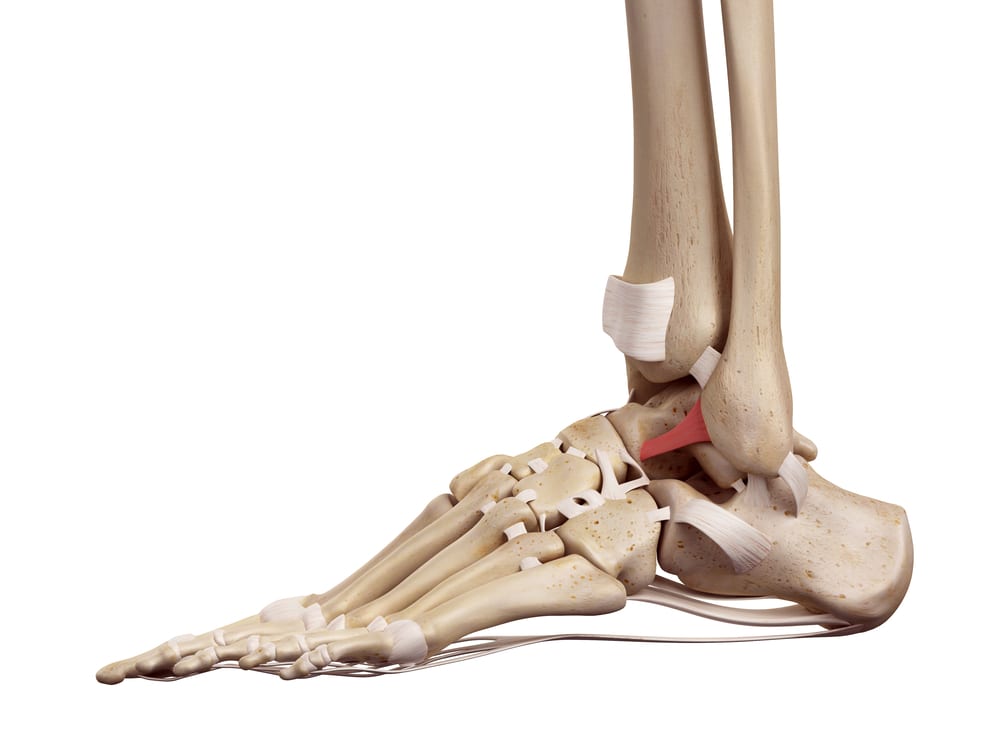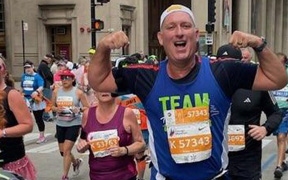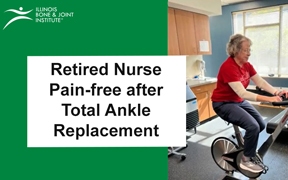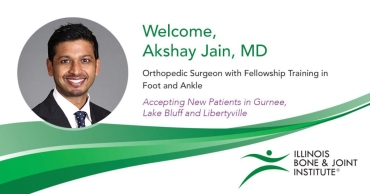Ankle sprains are one the most common injuries seen by foot and ankle specialists. Sprains often occur with athletic injuries and it is estimated that more than 2 million sprains occur each year in the United States. IBJI’s Dr. Steven Jasonowicz, discusses ankle sprains and answers common questions about healing an ankle sprain and instability that can occur.
While most sprains heal without further issue, some can develop chronic pain and instability. Dr. Jasonowicz says, “It is considered to be chronic if the ankle joint still gives way too easily after the first sprain, or if the ankle is sprained again within six months of the first sprain. Chronic ankle sprains can leave the ankle weak and susceptible to repeated injury. Repeated injury to the ligaments of the ankle can cause further weakness and even arthritic changes within the ankle joint over time.”
According to Dr. Jasonowicz, inversion ankle sprains are the most common and can lead to damage to the anterior talofibular ligament (ATFL), (see image below). “While there are other ligaments surrounding the ankle joint the ATFL is most commonly injured. Some sprains simply result in inflammation of the ligament while others can result in tearing or even rupture of the ATFL,” says Dr. Jasonowicz.

Treatment
Sprains are initially treated with a period of rest, immobilization, and anti-inflammatory medications/ice. Some patients will benefit from physical therapy in treatment for their ankle sprains as well. Recovery time is dependent on many factors such as age of the patient, overall health, severity of injury, weight, and time since the injury occurred.
Dr. Jasonowicz says that some patients may fail to improve with conservative/non-surgical treatment and continue to have pain or a feeling of instability at the ankle. “Patients will often describe a feeling that their ankle wants to give out or that they do not trust their ankle. While x-rays may have been taken at the time of the initial injury, further imaging such as an MRI or ultrasound may be helpful in evaluating structures of the ankle joint further.”
Surgery Options
Dr. Jasonowicz explains the surgery options that patients have, “When the ligaments along the lateral or outside of the ankle joint are found to be insufficient, surgery may be considered. Of course, there are many factors used to determine when a patient should proceed with surgery. Traditionally, the ligaments are primarily repaired or reinforced. The most commonly performed procedure is called a Broström procedure. This is where an incision is made along the outside of the ankle joint. The anterior talofibular ligament is then repaired/tightened. The ligament is repaired with strong sutures and small anchors in the bone reattaching it. Sometimes a structure called the extensor retinaculum is incorporated into the repair, adding additional stability around the ankle joint.”
For more severe/chronic ankle injuries, Dr. Jasonowicz says that completely reconstructing the lateral ankle ligaments may be required. A reconstruction requires a tendon graft which is used to recreate ligaments that are so severely damaged they cannot simply be repaired. Surgical repair or reconstruction can help restore function, add strength and help protect the ankle from reinjury.
“Typically, I will supplement my primary repair with the Arthrex InternalBrace. The InternalBrace is a special collagen coated suture that is used to protect the surgically repaired ligament. It is secured over the top of the repaired ligament with 2 small anchors in the bone. It allows the ankle joint to function normally but helps to protect it from overstretching or abnormal movement which could damage the repaired ligament. The InternalBrace stays in place indefinitely and in most patients allows them to return to activity sooner,” explains Dr. Jasonowicz.
Every patient is unique and it is common that additional procedures are done the same time to address other issues. Dr. Jasonowicz likes to “inspect/repair the tendons along the outside of the ankle joint that are often times injured as well. Ankle joint arthroscopy can be done as well allowing me to repair any additional injuries within the ankle joint.”
After surgery, patients are typically advised not to put weight on the foot for a couple of weeks, or until the stitches are removed, then protected weight-bearing in a boot and physical therapy begins. The ultimate recovery varies with each patient but most are back to full activity within a few months.

Steven Jasonowicz, DPM
Dr. Steven Jasonowicz is a podiatric foot and ankle surgeon providing diagnosis and treatment for the full spectrum of foot and ankle disorders.
*This content is for information only and is not intended to replace the diagnosis, treatment, or medical advice from your treating healthcare professionals. The content does not provide medical advice, does not constitute the practice of medicine or other healthcare professional services, and does not create a doctor-patient relationship. You should not rely on this information as a substitute, nor does it replace professional medical advice, diagnosis, or treatment. If you have concerns or questions, seek the advice of your healthcare professionals. If you think you may have a medical emergency, call your doctor or 911 immediately. Do not rely on electronic communications or communicate through this website for immediate, urgent medical needs. This website is not designed to facilitate medical emergencies. The use of the information is at the reader’s own risk. The links are provided for information and convenience only. We cannot accept responsibility for the sites linked or the information found here. A link does not imply an endorsement of a site.




